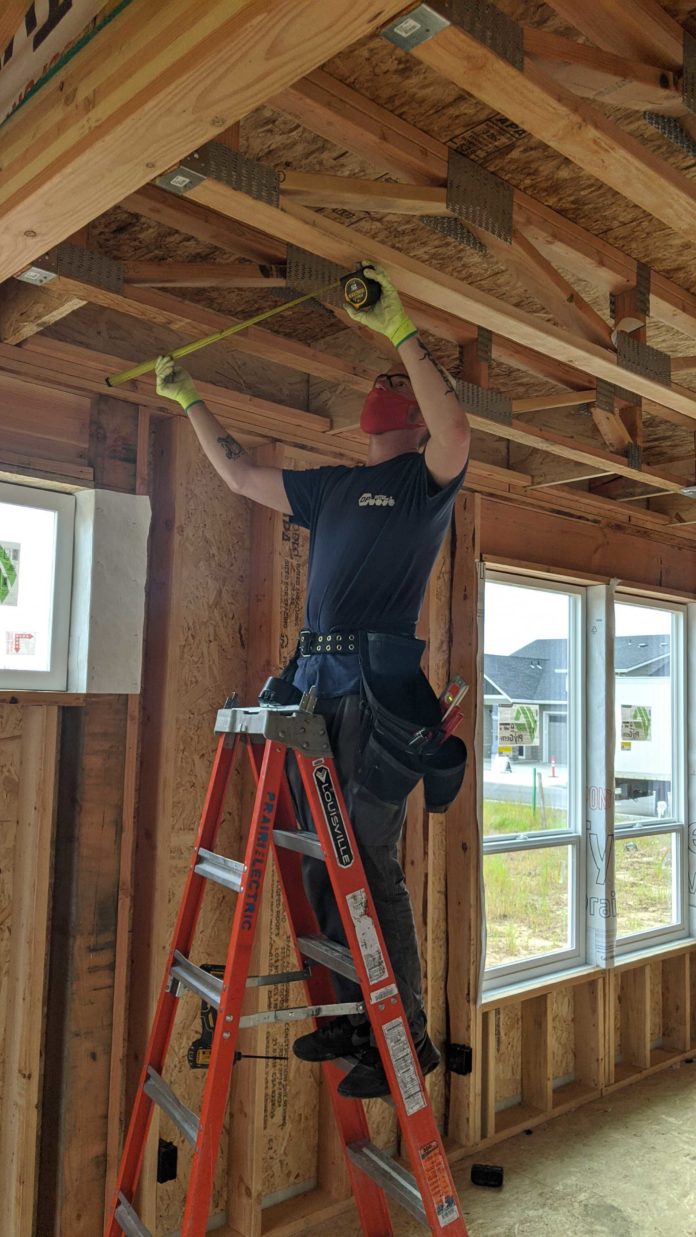
More than 60 contractors, workforce development specialists, members of the media and others involved in the construction trades tuned in this morning for the Southwest Washington Contractors Association webinar, Let’s Get Back to Work Safely.
The webinar featured a panel of local experts, including Tapani Inc. Health and Safety Director Logan Kaiser, who is also a registered nurse; Darcy Hoffman, a member of Workforce Southwest Washington’s Business Engagement Team; and Chuck Green, Otak Vancouver senior project manager.
As COVID-19 plans are due to the governor’s office today and commercial construction heads into phase one of Gov. Jay Inslee’s return-to-work plan, contractors are eager to know how to stay in compliance on the job site, especially as requirements change and evolve quickly.
Hoffman spoke about rehiring employees after a furlough or standby. While rules governing unemployment during the Stay Home, Stay Healthy order have relaxed to allow nearly all unemployed people to remain on standby and not job search during their period of unemployment, there are also evolved expectations around returning to work and when it is reasonable to refuse reemployment offers.
There are a number of acceptable reasons an employee could refuse to return to a job that is waiting for them – if they are sick with COVID-19 or caring for someone who is, if they are taking care of a child whose school or daycare remains closed, or if the job or pay has substantially changed in the interim. A former employee can also refuse to work and continue to draw unemployment if the workplace is considered unsafe. A claim in this matter will be met by an investigation from the Employment Security Department into both the claim and the worksite.
Still, said Hoffman, both workers and employers appear ready to start having conversations about returning to work, even in cases where substantial adjustments must be made.
“It’s felt like the house is on fire and companies are just trying to figure out how to get out safely,” said Hoffman. “Now maybe we are ready to do that”
Green offered specific information and tips about how to stay in compliance on the job site, and an admonishment for contractors to keep up.
“If you’ve got a currently operating construction site, COVID plans are due today,” he said to attendees.
He emphasized the n-95 masks are still being prioritized for medical workers and that contractors should source cloth masks, which are being produced by a number of local makers. These connections are usually word of mouth, and it’s up to the individual contractors to find them or have them made. Gloves and eye coverings are also required, and Green recommends using goggles. Green advised creating nonverbal signals for times when a construction site is noisy and workers who are six feet away from each other have to talk, and never to share cell phones.
Green said local jurisdictions continue to update their inspection policies and that at Clark County, a 24-foot distance from the inspector is required, creating some cases where the structure will have to be vacated entirely to accommodate the inspector.
Required coronavirus testing continues to be a question mark for the industry. Green mentioned that two Vancouver Clinic locations are offering rapid testing for construction workers, and Tapani’s Kaiser expects there to be mandatory testing at some point, though the practice remains controversial.
Prior to the Stay Home, Stay Healthy order, Tapani Inc. employed 475 people. Many had been temporarily laid off when construction work was deemed nonessential in Washington, but the company is quickly rehiring, and work in Oregon has remained steady.
Kaiser emphasized the work Tapani has done to overcome political differences and opinions within management ranks and remain a unified force for workers.
“We had to make sure at Tapani that we were all one-minded,” he said. “Initially I could say when this came out we were not one-minded. We had to sit down and have a conversation – we have to agree we are going to back each other.”
After that, the scramble to prepare in an organized way began with the sourcing of thermometers and the productions of masks, the creation of signage and wash stations, and binders, binders and more binders of protocols and logs.
The company made the difficult decision to proceed on Oregon job sites with the same standards that apply in Washington.
“It was a little difficult for Oregon folks, but we just feel like that’s the right thing to do,” said Kaiser. He said the company was singled out by the Oregon Department of Transportation for implementing extra precautions south of the river.
“It’s a big deal,” he said. “Everyone is watching.”
The webinar and accompanying slides will be made available on SWCA.org today, and SWCA Executive Director Nelson Holmberg said a series of free webinars for members is in the making to help contractors stay ahead of the changes.


